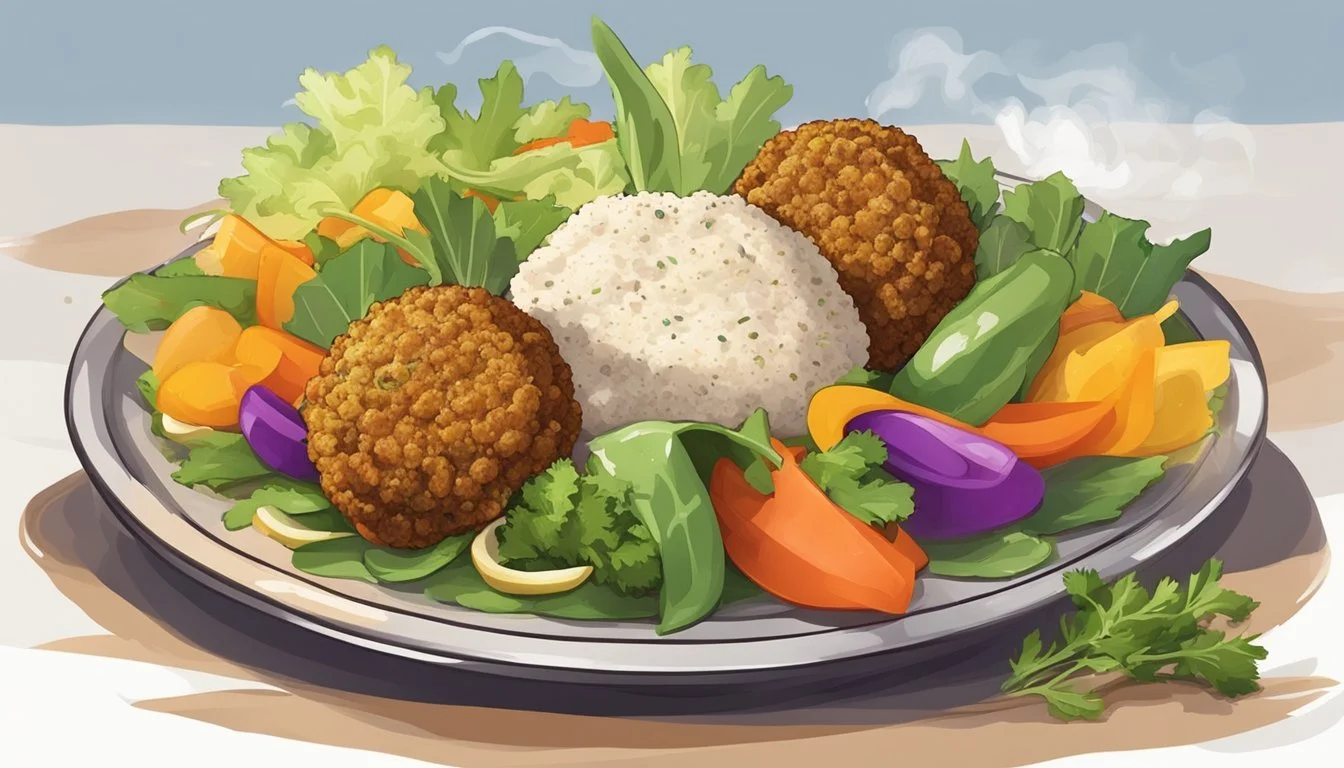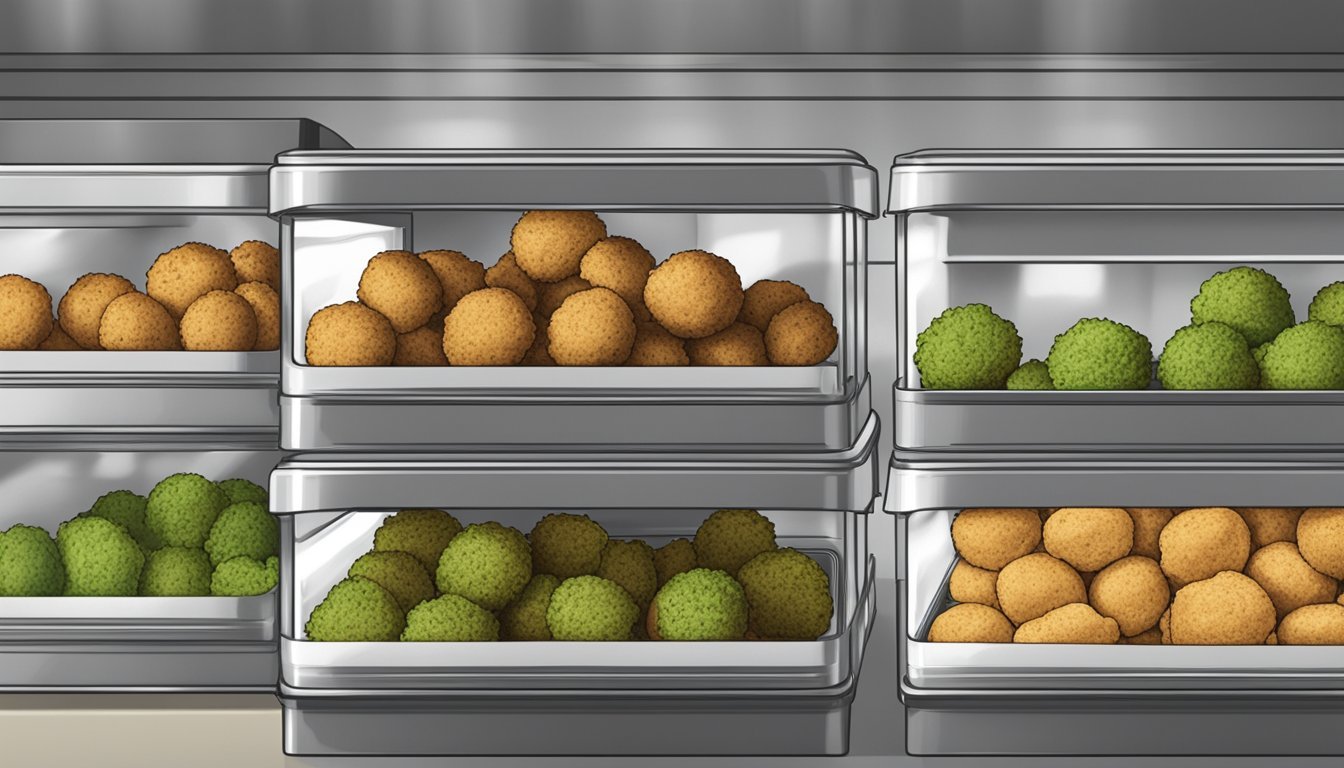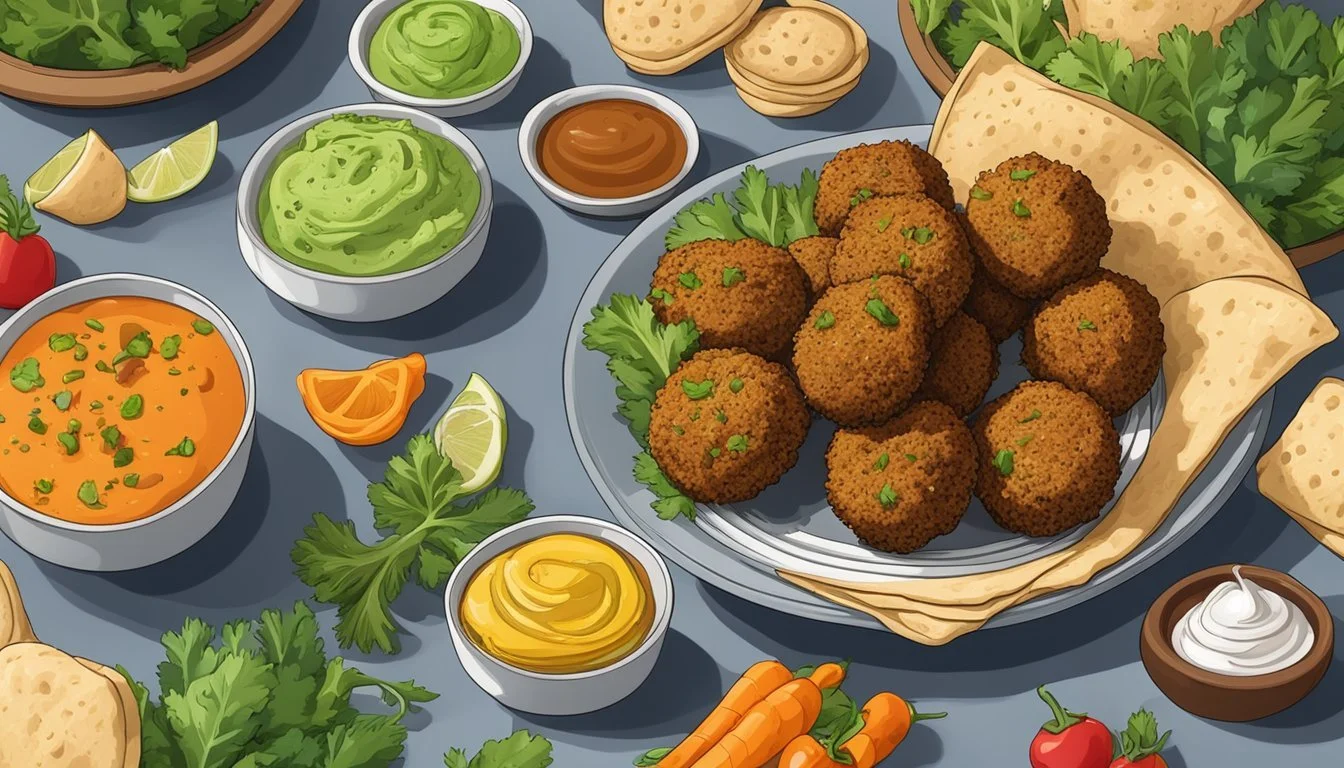How Long Does Freshly Prepared Falafel Last?
Shelf Life and Storage Tips
Freshly prepared falafel, a popular Middle Eastern dish made from ground chickpeas or fava beans and spices, is best enjoyed when it's hot and crispy straight from the fryer. However, if you find yourself with leftovers or if you're preparing falafel in advance, understanding its shelf life is crucial for maintaining both its taste and food safety. Falafel has a relatively short life span once it's cooked, with optimal freshness lasting up to four days when refrigerated in airtight conditions.
When storing falafel, it's important to consider factors such as moisture levels and exposure to air. Moisture can lead to spoilage, so falafel should be cooled completely before being placed in the refrigerator to minimize condensation. In its uncooked state, falafel mixture can last longer given that it's kept dry and well-sealed. If longer storage is needed, freezing is the most effective method to preserve the integrity of the falafel's flavor and texture. Properly packaged uncooked or cooked falafel can be stored in the freezer, extending its shelf life for several months.
Consumers should always be mindful of any changes in odor, flavor, or texture of falafel, as these are indicators of spoilage. To ensure safety and enjoy falafel at its peak quality, adhere to these guidelines and always err on the side of caution if the falafel does not appear or smell as expected.
Fundamentals of Falafel Storage
Freshly prepared falafel requires careful storage to maintain its quality. Proper techniques can extend shelf life, preserve the falafel's desirable texture and taste, and prevent spoilage.
Refrigeration Techniques
Freshly prepared falafel should be stored in the refrigerator within two hours of cooking to minimize the risk of bacterial growth. In the fridge, place falafel in an airtight container to maintain freshness. They can stay fresh for up to 3-4 days under refrigeration.
Freezing Instructions
To freeze cooked falafel, cool them first to prevent condensation within the packaging that could lead to freezer burn. Use freezer-safe containers or zip-top bags to prevent exposure to air and keep them at 0°F (-18°C) or lower. When properly frozen, falafel can last for up to three months.
Shelf Life Considerations
The shelf life of falafel is generally 3-4 days in the refrigerator, while the dry falafel mix can last for several months if stored in a dry place in airtight containers. The expiration date can vary based on ingredients used and storage conditions.
Sensory Indicators of Freshness
The freshness of falafel can be determined by its texture, taste, and smell. A crispy exterior and moist interior suggest good quality, while an off smell, change in taste, or the presence of mold indicate spoilage.
Understanding Moisture's Impact
Moisture can significantly affect falafel's texture and can lead to spoilage. Store falafel in a way that minimizes moisture to maintain a crispy exterior and prevent the growth of bacteria that could lead to foodborne illness.
Packaging for Freshness
Proper packaging is crucial for maintaining falafel's freshness. An airtight container or zip-top bag is ideal to prevent exposure to air which can dry out falafel or, conversely, trap excess moisture, resulting in a soggy texture.
Room Temperature Risks
Falafel should not be left at room temperature for more than two hours as it increases the risk of spoilage and foodborne bacteria. Always refrigerate or freeze leftovers promptly to maintain safety and freshness.
Leftover Falafel Best Practices
When reheating leftover falafel, ensure that it reaches an internal temperature that is hot enough to kill any potential bacteria. If freezing, label the storage containers with the freezing date, and use the frozen falafel within the recommended three-month period to enjoy the best quality.
Falafel Preparation and Preservation
Preserving the freshness and ensuring the longevity of falafel involves careful consideration of cooking methods and ingredient selection. The section delineates how these factors, along with proper mix preparation and storage conditions, directly impact the falafel's shelf life.
Cooking Techniques and Their Effects
Cooking falafel can be achieved through various methods including frying, baking, and using an air fryer. Deep-fried falafel often results in a crispy exterior and a tender interior. The ideal internal temperature when frying should reach 350-375 degrees Fahrenheit. Baking on a parchment paper-lined baking sheet is a healthier alternative that can affect moisture levels, potentially extending shelf life. Air-frying provides a middle ground, offering a crispy texture with less oil.
Ingredient Choices and Longevity
The choice of ingredients plays a crucial role in the falafel's shelf life. Utilizing dried chickpeas instead of canned, fresh herbs such as parsley, coriander, and cumin as well as fresh garlic and onion, enhance both flavor and preservation. The absence of preservatives in homemade falafel can shorten shelf life but selecting high-quality, fresh ingredients can slightly prolong it.
Optimal Falafel Mix Preparation
Preparation of the falafel mix involves processing dried chickpeas or fava beans, along with herbs, spices, and baking powder or baking soda for leavening. To ensure consistency and reduce cooking time, the mix should be formed into uniform balls. The mix can be stored frozen in airtight containers or freezer bags for several months, which preserves its quality until cooking is required.
Utilizing Baking Additives
Including baking additives such as baking powder and baking soda can influence the texture and density of falafel, impacting its cooking process and final taste. A proper balance of these additives is essential as they can cause falafel to be too dense or too airy, thus affecting their structural integrity during cooking and storage.
Prioritizing Health and Dietary Concerns
Falafel is a popular choice for individuals adhering to vegan or vegetarian diets, offering significant amounts of protein and fiber while being relatively low in calories. Ensuring the preservation of these nutritional benefits involves avoiding excessive oil by opting for the baking method and using health-conscious ingredients like tahini and cayenne pepper for added flavor without additional oil.
Advanced Falafel Storage Solutions
Proper storage techniques are vital for extending the shelf life of falafel while maintaining its flavor and texture. These advanced strategies ensure your falafel remains safe from foodborne illness and ready for future consumption.
Make-Ahead Strategies
For those who plan to prepare falafel in advance, freezing uncooked falafel is an efficient method. Following these steps helps to preserve the falafel's quality:
Shape the falafel into balls or patties as you would just before cooking.
Place them on a baking sheet lined with parchment paper, ensuring they do not touch.
Freeze until solid, which will prevent them from sticking together.
Transfer the frozen falafel into airtight containers or freezer-safe bags, label with the date, and return them to the freezer.
Maintaining Flavor and Texture Post-Freezing
Falafel's crispy exterior and tender interior are prized qualities that can be preserved even after freezing. To maintain these characteristics:
Ensure falafel is stored in airtight conditions to prevent freezer burn.
Wrap cooked falafel individually in aluminum foil before placing them in an airtight container, which helps retain texture.
Consider adding a small piece of parchment paper between each falafel if freezing a stack to prevent sticking.
Thawing and Reheating Methods
To revive frozen falafel, both texture and flavor must be considered. Reheating falafel properly ensures it stays delicious and safe:
Thaw frozen falafel in the refrigerator for several hours or overnight for the best results.
Reheating options include:
Oven: Preheat to 350°F (180°C), place falafel on a baking sheet, and heat for 5 to 10 minutes.
Air Fryer: Heat at 350°F (180°C) for 2 to 3 minutes, ensuring they aren't touching.
Skillet: Warm a small amount of oil over medium heat and fry falafel for 2 to 3 minutes on each side until heated through and crispy.
Implementing these advanced storage solutions will assist in keeping your make-ahead falafel fresh and flavorful for whenever you need a convenient and tasty meal.
Miscellaneous Tips and Tricks
When making homemade falafel, knowing the nuances of storage and creative repurposing can enhance both their appeal and longevity. Below are several focused strategies that go beyond the basic recipe to ensure you get the most out of your falafel experience.
Enhancing Homemade Falafel Appeal
To maintain the authentic taste and crispiness of homemade falafel, it should be stored in the fridge within two hours of cooking to prevent bacterial growth. Use an airtight container lined with paper towels to absorb excess moisture, which can help retain texture and extend the shelf life up to 5 days. When reheating, briefly bake in an oven to restore the desired crunch.
Repurposing Leftovers Creatively
Falafel leftovers can be transformed into new meals. Utilize them in a falafel sandwich, crumbled over a fresh salad, or mixed within a savory hummus or baba ganoush dip. Remaining tahini sauce pairs splendidly with roasted vegetables or as a zingy dressing, turning what might have been wasted into a culinary adventure.
Culinary Inspirations for Unused Ingredients
Should you have ingredients like fresh cilantro, dried chickpeas, or fava beans left unused, they can inspire new dishes. Cilantro brightens up salsa and chutneys. Chickpeas and fava beans can be used interchangeably in recipes to create diverse meals such as hearty soups, stews, or even roasted as a crunchy snack, seasoned with black pepper and spices.
Economic Benefits of Proper Storage
Effective storage not only preserves the quality of falafel but also translates to economic benefits. By refrigerating immediately and dating the packages, you can reduce food waste and save money. Extend shelf life by freezing falafel mix in pre-portioned sizes—a savvy move, particularly during periods like Lent when such ingredients might be in higher demand.
Food Safety Guidelines to Avoid Illness
To avoid foodborne illness, remain vigilant for signs of spoilage such as mold or an off smell. Keep falafel at or below 40°F in the fridge to restrict bacterial spread. When using canned chickpeas, ensure that all beans are thoroughly cooked as they are prone to bacterial contamination if not handled correctly.
Conclusion
When properly stored in the refrigerator, freshly prepared falafel typically has a shelf life of 3 to 5 days. It is important for consumers to consider the ingredients used, the cooking method, and the storage conditions to ensure maximum freshness.
Storage conditions: Falafel should be stored promptly in the refrigerator within 2 hours of preparation.
Temperature range: Keep them at a safe temperature below 40 degrees Fahrenheit to deter bacterial growth.
Air exposure: Store falafel in airtight containers to protect from contaminants and preserve moisture.
In the event of leftover falafel, freezing is an option for extending its lifespan. Frozen falafel can maintain its quality for several months when stored in airtight containers or freezer-safe bags.
To summarize, eaters are advised to enjoy their falafel fresh and in a timely manner. Observing safe food handling procedures will help maintain the quality and safety of this beloved dish.
Appendix
In the context of the article's focus on the shelf life of freshly prepared falafel, this appendix provides additional resources for readers who wish to explore the topic in greater depth.
Resource List for Further Reading
Storage and Preservation: Readers seeking to understand the nuances of storing falafel effectively can consult sources that delve into methods which prolong freshness and safety.
Preparation Techniques: Those interested in the intricacies of falafel preparation leading to optimal shelf life may explore materials detailing cooking, refrigeration, and freezing strategies.
Health and Safety Considerations: For individuals prioritizing food safety, resources are available that outline best practices for identifying spoilage and maintaining falafel quality.
Readers might reflect on the balance between proper falafel storage and the culinary quality desired when consulting these resources.







